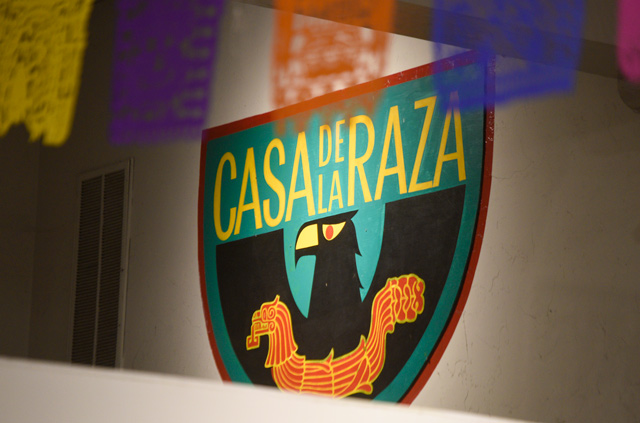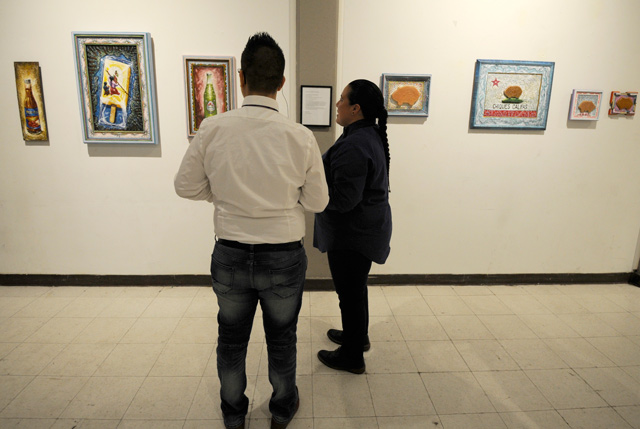La Casa Turns 45
But Bankruptcy Haunts the Party

Last Friday night, La Casa de La Raza celebrated its 45th anniversary with three Latino bands and a decent crowd. Frank Ramirez, a longtime Santa Barbara deejay, found himself remembering the 1980s, when he began performing at the Montecito Street community center. “It has been a mainstay,” he said.
With deep roots in Chicano activism, La Casa is more crucial than ever in this increasingly divided world, supporters say. But as the financially embroiled Eastside hub trudges through bankruptcy proceedings, its future remains uncertain.
Enter Ed St. George. A developer known for his prolific collection of student housing complexes, St. George hopes to purchase La Casa’s mortgage note from founding member Tomas Castelo. When Castelo bought the note last September from Fidelity Mortgage Lenders, La Casa management rejoiced. After nearing the auction block multiple times, they thought they were in the clear. But when Castelo indicated he would keep them in foreclosure and demanded they reveal their financial records, they sued him and filed for Chapter 11 bankruptcy.
Now, Castelo said he is not willing to sell the note to anyone who does not share his vision for La Casa’s future, like St. George, “who would just take a bulldozer to the building.”
It is no secret La Casa has faced fiscal challenges for a long time. According to bankruptcy documents, La Casa owes nearly $120,000 in tax claims and about $540,000 to Castelo. A recent appraisal found the building at 601 East Montecito Street is worth $2.2 million.

“The current financial problems aren’t going to be resolved by a new lender at a lower interest rate,” Castelo said, adding he has received feelers in the past from potential investors. “It’s my objective to nip it in the bud and work our way out of that hole.”
But Eric Bensamochan, La Casa’s bankruptcy attorney, argued Castelo might not have a choice in selling the note, as bankruptcy judge Peter Carroll could order him to do so. According to Bensamochan, St. George has offered to loan the money at a 5 percent interest rate — much less than its current rate of 9.5.
The case returns to court early next month, when La Casa’s Chapter 11 reorganization plan will be reviewed before it is sent to its creditors for a vote.
In court filings, La Casa proposes to generate revenue by leasing some of its 26,000-square-foot space as storage units or office space for attorneys at a low cost in exchange for pro bono services.
“The fact that we are in bankruptcy has not stopped our programs,” said Raquel López, La Casa’s executive director. “We still have been able to keep our doors open from 9 a.m. to 9 p.m. daily,” and more than 2,000 people come through every month. Lopez emphasized that La Casa mirrors the community’s needs; on Monday, they are hosting a post-election community forum. “There are real, real fears about deportation,” she said. As for the finances, she admitted past struggles existed and argued that bankruptcy filings necessitate transparency.
Over the years, La Casa has offered after-school programs, been rented out for parties or quinceañeras, and has served as a venue for Chicano theater and rock bands such as Los Lobos and Los Tigres del Norte. The dual-language elementary school César Chávez (now Adelante), as well as neighborhood health clinics, emerged out of it. The same is true for community bike shop Bici Centro.
Others expressed wariness that the proposal to lease space will raise enough funds to pay back the loan. “You can’t do the same thing and expect different results,” said Jacqueline Inda, an Eastside advocate who described herself as the spokesperson for the initial founders, including Leo Martinez, Benji Cheverez, Cheila Castro, and Frank Banales’s parents. The founders are still active, Inda said, noting some sued the city to implement district elections.
“Everyone wants the best for this community,” Inda added. “It is a needed asset. The problem is how to get there when you have almost like a marriage that has fallen apart. How do you get to the point where they are all communicating toward something positive?”

Is He Really “Saint” George?
Should Ed St. George be able to purchase the note, “There is no chance of La Casa staying the way it is,” he said. “It has to go.” Though he said he would probably not be the developer, St. George envisioned a multipurpose building: Perhaps a hotel with 12 to 20 family-style units on the second floor and a community center on the first. He suggested art exhibits could be tied to events; for instance, when Carlos Santana comes to the Santa Barbara Bowl, an art exhibit on his life could be featured. “When you go back to New York,” he said, “it’s that way with the Irish culture.”
As the Eastside changes — a new apartment complex recently went up on the empty lot across the street — it is unlikely bands would continue to play there, he added.
One question is, why would St. George want to get involved when others have tried and failed? He explained La Casa played a meaningful role in his life as a teenager. At age 15, his mom left town and he moved in with a Latino family — the Sierras — on the Eastside. It was “the place to be,” he said, and La Casa was in the heart of it.
Asked about St. George’s possible involvement, Marisela Marquez and Michael Gonzales, former and current La Casa board presidents, respectively, declined to get into preliminary — and unfinalized — details, but they expressed optimism and excitement about the prospect. “This is the time to dream big,” Gonzales said. “The sky is the limit.” Likewise, Lopez said La Casa is open to change. She was also reassured by the fact that St. George helped the financially strapped Isla Vista teen center last year.
“She’s 45,” Lopez added, personifying La Casa. “She has gone through so much, and I think the best time of her life is about to happen. I think she’s going to really flourish in her fifties.”

People or Place?
Forty-five years ago, Leo Martinez convinced an executive at Bank of America to loan him $150,000 to buy an old warehouse. It was right after the infamous bank burning in Isla Vista, and Bank of America was looking to revamp its image, wrote Martinez in a brief history of La Casa de la Raza, which translates to “The House of the People.”
“At that time many of the people involved in the movement were single. I felt that there should be an organization for married people with kids that wanted to be involved,” Martinez wrote. “We would hold rummage sales and bake sales, have booths at local carnivals and fairs.”
But it has not been easy. When they celebrated Fiesta to raise money for a down payment on the building, Martinez wrote, some liberals would criticize them for celebrating the landing of Spaniards on the Santa Barbara shores. Likewise, early involvement by university students proved detrimental because “they were there for their own agenda.”
Mutual respect developed, though, he wrote. “My fond memories are of the hundreds of volunteers that would donate their time — gardeners, construction workers, doctors, lawyers, just everyone — even though many people still thought we were militant because they had never seen Chicanos organize themselves to do something positive.”
If he had his druthers, Martinez hoped Castelo and the city could strike a deal where the city could acquire the building as a historical site and set up a community board to oversee it. For his part, Castelo argued the building should separate from the nonprofit so that the current management would not be responsible for its finances.
The question remains whether or not this rich history is intrinsically attached to the building itself. When asked, Ray Franco, a former school boardmember who once offered to buy the note, replied with a resounding no. “All of this is about people.”



